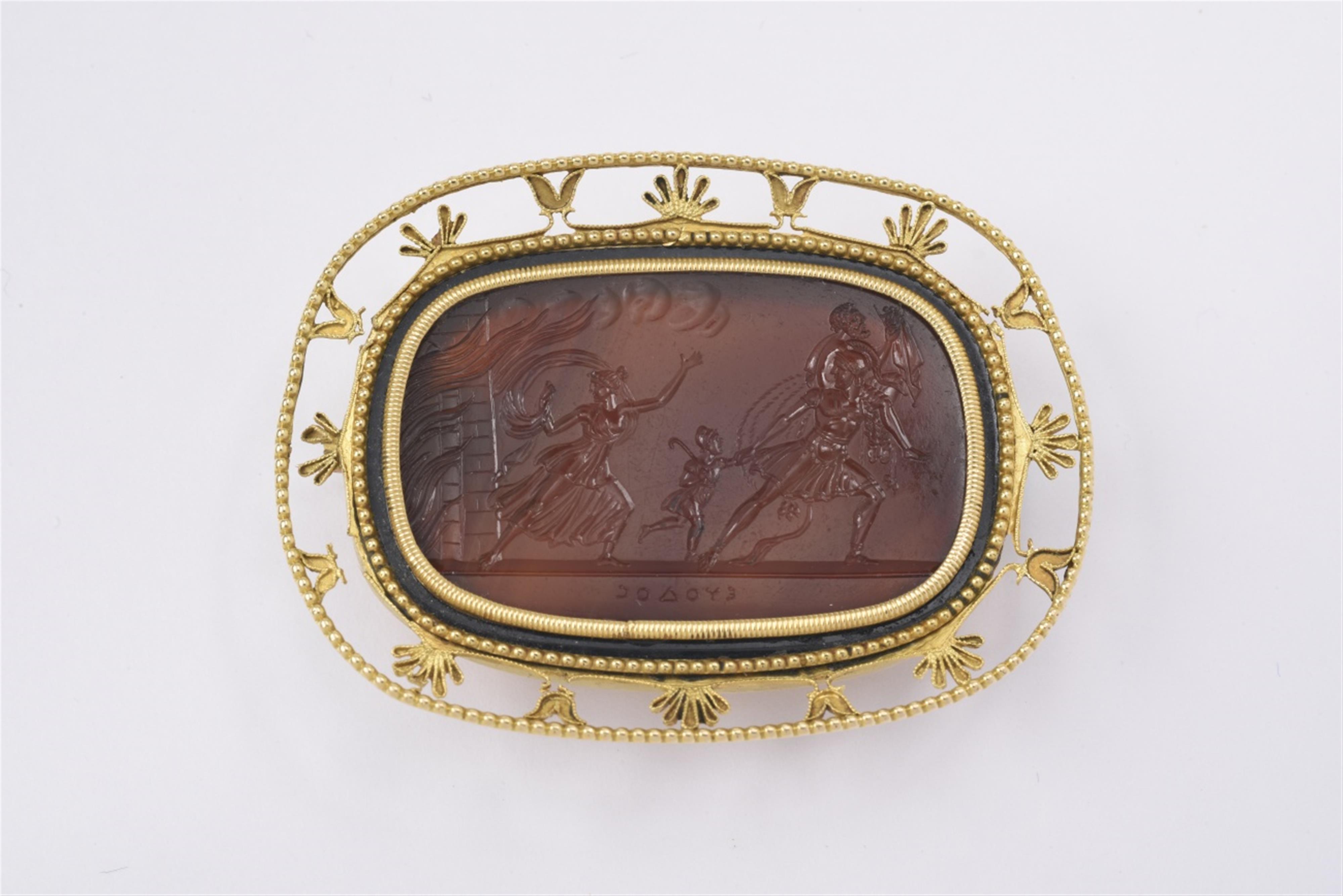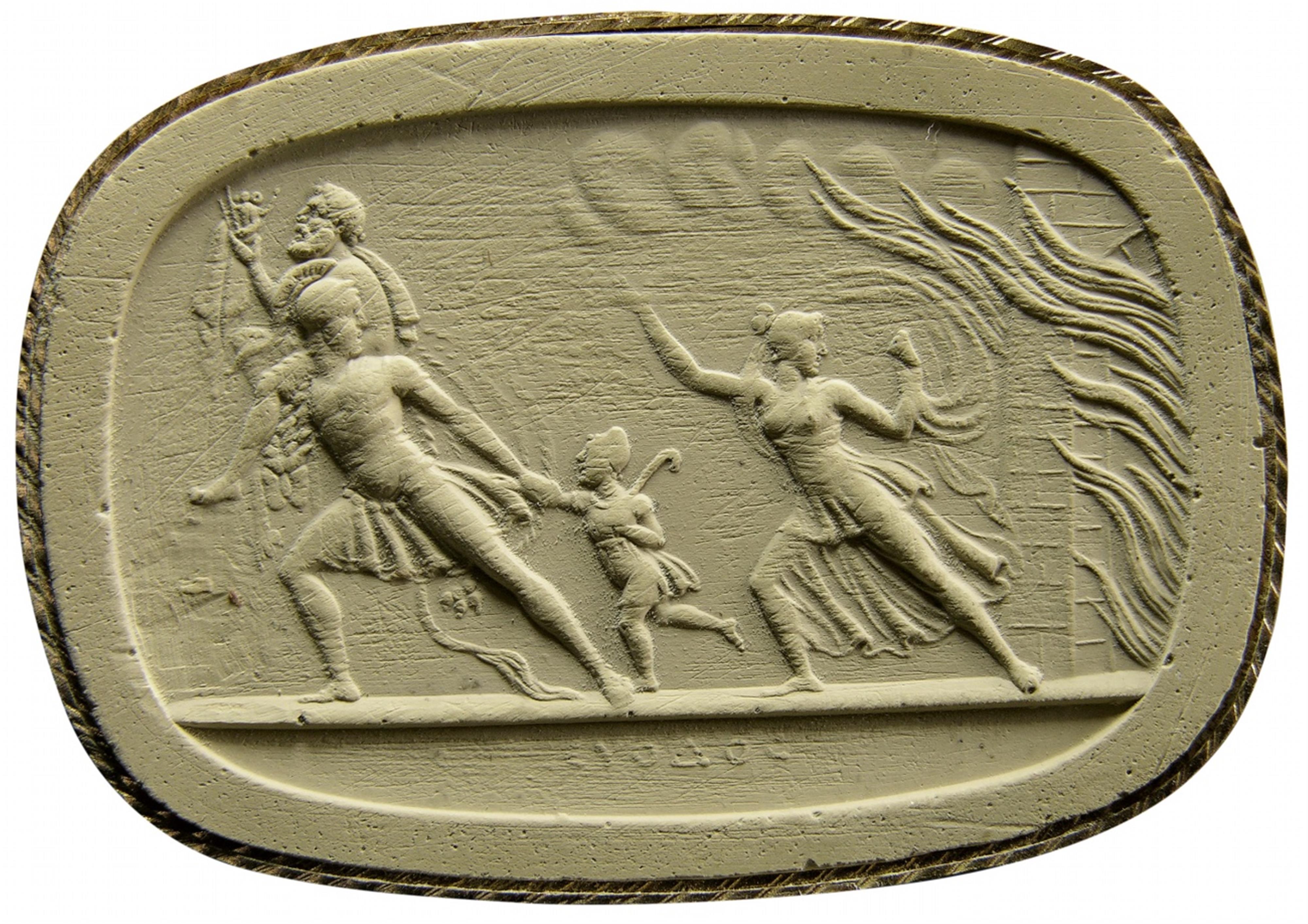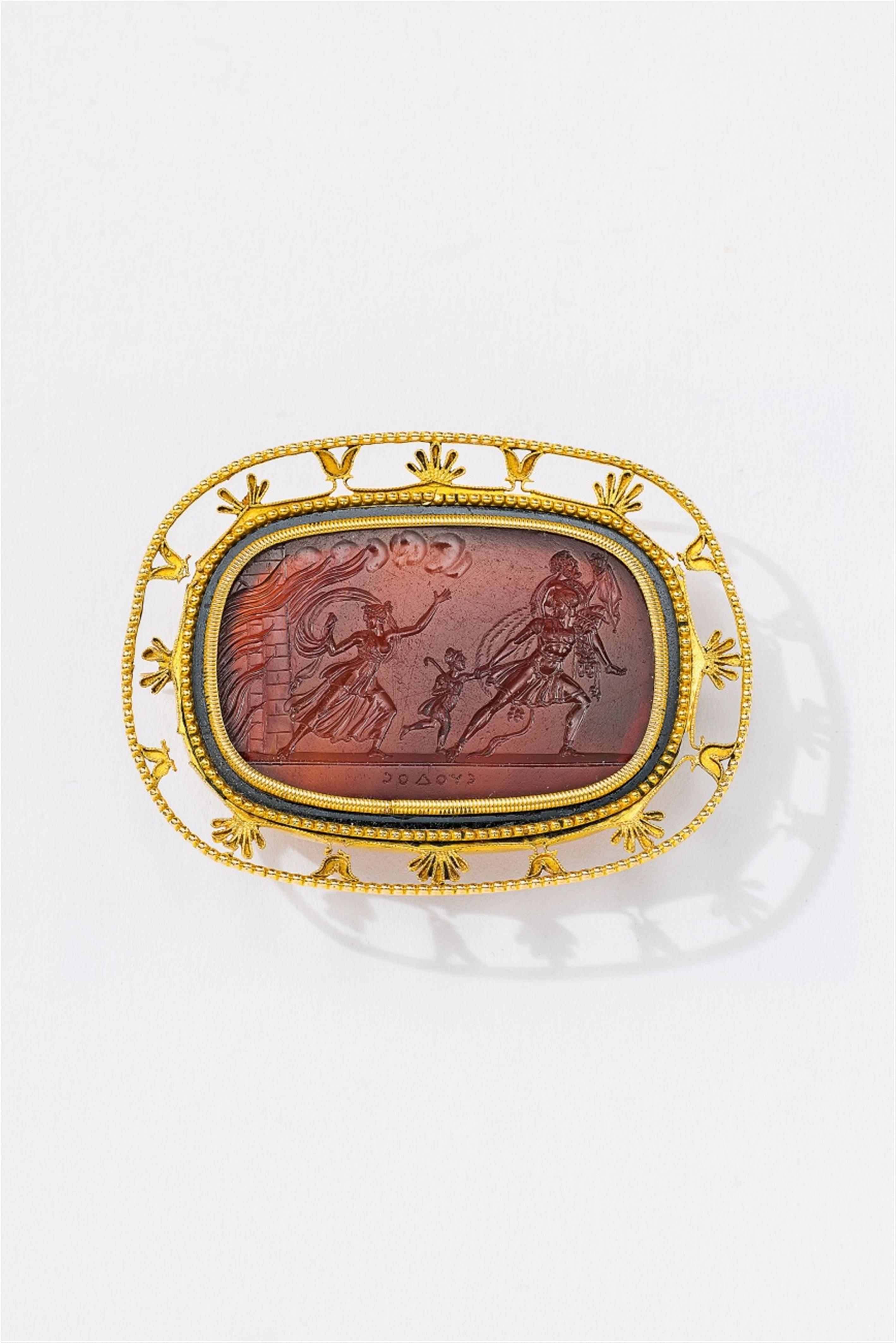A 14k gold brooch with a Neoclassical Poniatowski sardonyx intaglio in its original gold and enamel mount.
Set with a transluscent lightly banded carnelion intaglio (ca. 40 x 33 x 4.2 mm) finely carved with a depiction of Aeneas, Anchises, Ascanios and Creusa fleeing from the burning city of Troy, signed in Greek letters "Euodos". In its original pierced filigree frame in the archaeological revival style with palmettes with a line of black enamel. Minimal damage to the filigree decor of the frame. H 4.3 cm. L 5.6 cm. Weight 21.9 g.
Presumably Rome, ca. 1820-30.
Prince Stanislaw Poniatowski (1754 - 1833) was the nephew and heir of Stanislaus II August, the last King of Poland, who was forced to abdicate in 1795. The Prince moved to Rome and styled himself as a passionate collector of antiquities and patron of the arts, even commissioning Angelica Kauffmann to paint his portrait. In a very short period he amassed an extraordinary collection of over 2,600 intaglios, which he claimed to be antique. In 1830, he published his collection in several volumes with commentary and accompanying plaster casts. The works were in fact commissioned from contemporary Roman gem-cutters working “alla maniera antica”, and are fantastic examples of late Neoclassical gem engraving. Amassing this imposing princely collection cost Poniatowski a small fortune. The unusually large gold-framed intaglios depict scenes derived from classical literature such as the works of Homer, Vergil, and Ovid, and are signed with the names of the most famous ancient Greek gem-cutters. They are of exceptional technical and artistic quality. Following the Prince's death in 1839, the collection was sold by Christie's in London. The auction turned out to be a flop, as rumours had already begun to surface that the gems were modern forgeries. Unfortunately, the talented gem-cutters who produced these works have as yet not been identified, but there is evidence to suggest that the famed Pichler brothers were among them.
We would like to thank Claudia Wagner from the Beazley Archive of the University of Oxford for her kind support.
Provenance
Former collection of Prince Stanislaus Poniatowski; auctioned by Christie's London, 29. 04. - 21. 05.1839, lot 1148; John Tyrrell, Esq. (1841): 1099; Lord Monson; auctioned by Christie's, London, 27.06.1854, lot 148; Private ownership, Belgium.
Literature
Listed in the online database of the Beazley Archive, Universität Oxford, Gem Research, The Poniatowski Collection, ref. no. T1099, with provenance, literature, and a case of the intaglio. Listed in catalogue: pierres gravées antiques de S.A. le Prince Stanislas Poniatowski (1830?-1833): VII.18; Prendeville, Explanatory catalogue of the proof-impressions of the antique gems possessed by the late Prince Poniatowski and now in the possession of John Tyrrell, Esq.,1841, no. 1099.






